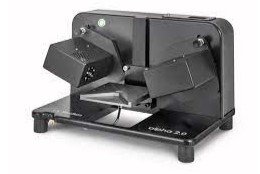J.A. WOOLLAM CO. INC
SPECTROSCOPIC ELLIPSOMETER
Ellipsometry measures a change in polarization as light reflects or transmits from a material structure. The polarization change is represented as an amplitude ratio, Ψ, and the phase difference, Δ. The measured response depends on optical properties and thickness of individual materials. Thus, ellipsometry is primarily used to determine film thickness and optical constants. However, it is also applied to characterize composition, crystallinity, roughness, doping concentration, and other material properties associated with a change in optical response.
Since the 1960s, as ellipsometry developed to provide the sensitivity necessary to measure nanometer-scale layers used in microelectronics, interest in ellipsometry has grown steadily. Today, the range of its applications has spread to the basic research in physical sciences, semiconductor and data storage solutions, flat panel display, communication, biosensor, and optical coating industries. This widespread use is explained by increased dependence on thin films in many areas and the flexibility of ellipsometry to measure most material types: dielectrics, semiconductors, metals, superconductors, organics, biological coatings, and composites of materials.

RC2 ELLIPSOMETER
- Dual Rotating Compensator Ellipsometer (RCE)
- 210-1000 nm
- 210-1690 nm
- 210-2500 nm
- 800-1065 CCD sensors
- Auto angle 45-90deg
- Auto z
- 0.05 seconds

VASE ELLIPSOMETER
- Rotating Analyzer Ellipsometry (RAE)
- automated monochromator
- 240-2500 nm
- 193-240 nm
- 2500-4000 nm (requires liquid nitrogen cooling)
- Auto angle 15-90deg with Accuracy: 0.01 °

M-2000 ELLIPSOMETER
- Rotating Compensator Ellipsometer (RCE)
- 193-1000 nm
- 193-1000 nm
- 193-1690 nm
- 190-500 CCD sensors
- Auto angle 45-90deg
- Auto z
- 0.05 seconds

ALPHA 2.0 ELLIPSOMETER
- Dual-Rotation, 400-1000 nm
- 190 Detector CCD
- Manual Angles of Incidence 65°, 70°, 75° or 90° (straight-through)










